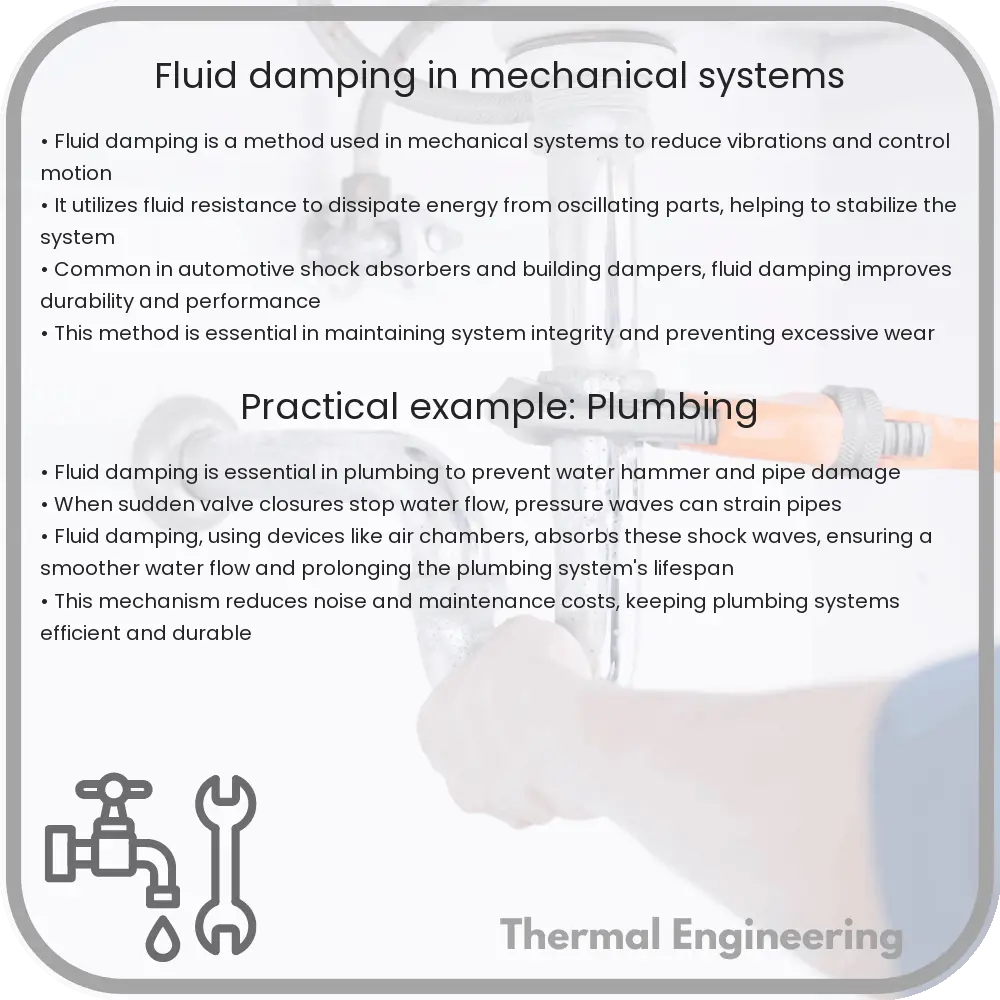Learn about fluid damping, a key engineering concept used to reduce vibrations and enhance system stability in various mechanical applications.

Understanding Fluid Damping in Mechanical Systems
Fluid damping is a critical aspect in engineering that helps manage the effects of vibration, noise, and system stability across various mechanical applications. This fundamental concept plays a versatile role from automotive suspension systems to the safety components in skyscrapers. In this article, we’ll explore the basics of fluid damping, how it is implemented in mechanical systems, and its impact on the performance and longevity of engineering structures.
What is Fluid Damping?
Fluid damping involves the use of fluids to absorb and dissipate the energy from mechanical vibrations and shocks. When a mechanical system vibrates, parts of the system move through a fluid, usually a liquid such as oil, which resists the motion through viscous forces. The resistance transforms kinetic energy of the vibrating parts into thermal energy, thereby damping the motion and reducing the amplitude of the vibrations.
Key Mechanisms of Fluid Damping
There are primarily two mechanisms through which fluid damping operates in mechanical systems:
- Viscous Damping: This is the most common form of fluid damping where the fluid’s viscosity is responsible for the resistance offered to the moving parts. Higher viscosity fluids typically provide greater damping effects.
- Squeeze Film Damping: This occurs when fluid is squeezed in and out of a thin film between moving parts, such as in journal bearings or between the seismic mass and housing in accelerometers.
Mathematical Representation of Fluid Damping
The effect of fluid damping can be quantitatively described by the damping coefficient (c), which is a parameter in the damping force equation:
Fd = -c * v
Here, Fd is the damping force, c is the damping coefficient, and v represents the velocity of the moving component. The negative sign indicates that the damping force is always in opposition to the direction of motion, effectively reducing the movement.
Applications of Fluid Damping
Fluid damping finds its application in several critical engineering systems:
- Automotive Industry: In shock absorbers and suspension systems, fluid damping is essential for improving ride quality and vehicle stability by mitigating the impact of uneven road surfaces.
- Building Construction: Tall buildings and structures use damping systems filled with fluids to absorb energy from wind or seismic activity, enhancing structural integrity and lifespan.
- Precision Instruments: Devices like accelerometers and gyroscopes utilize fluid damping to reduce noise and improve the accuracy of measurements.
- Industrial Machinery: Fluid damping is used to reduce vibrations in rotors, gears, and other mechanical parts, protecting machinery from wear and extending its operational life.
Benefits of Fluid Damping
Implementing fluid damping in mechanical systems offers several advantages:
- Enhanced Stability: By reducing vibrations, fluid damping enhances the stability and performance of machines and structures.
- Increased Comfort: In vehicles, effective damping systems ensure a smoother ride for passengers by absorbing road shocks.
- Extended Lifespan: Damping reduces the mechanical stress on components, decreasing wear and tear and extending the life of equipment.
- Reduced Noise: Lowering vibration levels inherently reduces noise, contributing to a more quiet and comfortable environment.
In conclusion, fluid damping is a pivotal engineering practice that marries materials science with mechanical design to mitigate unwanted vibrations. Through its implementation, engineers can enhance the efficiency, safety, and comfort of various mechanical systems, thereby pushing the boundaries of modern engineering solutions.